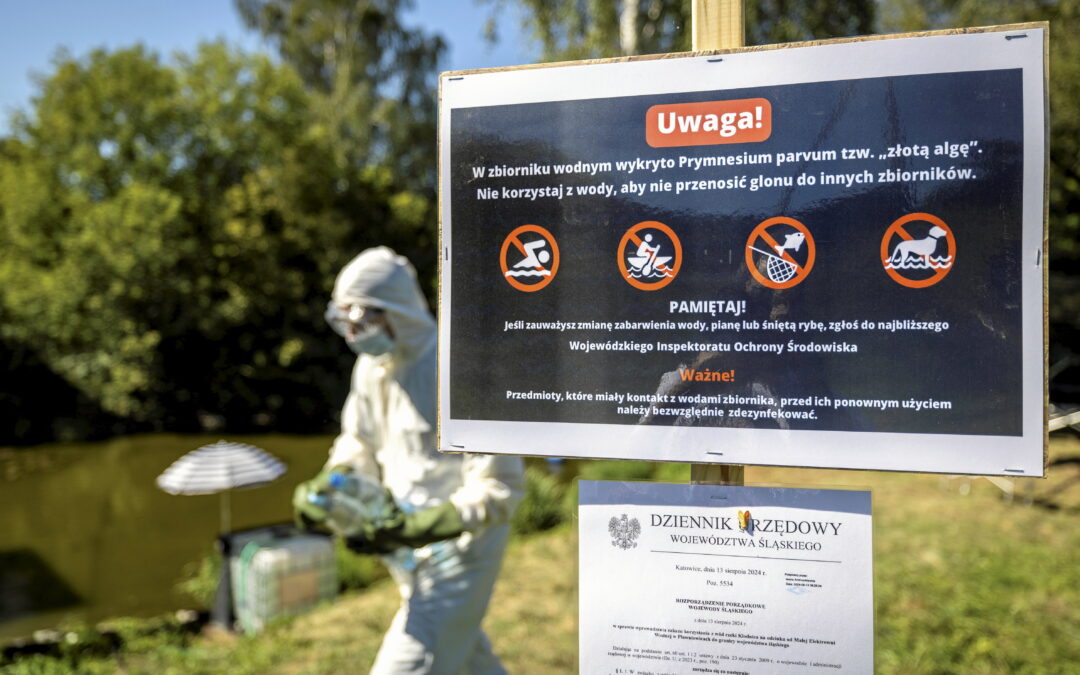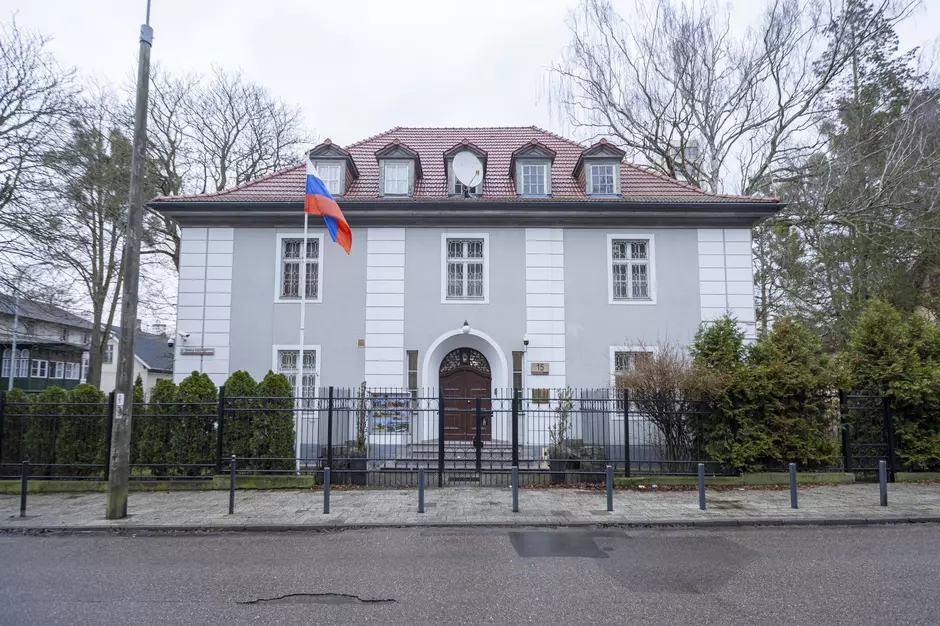More than 105 tonnes of fish have died in an artificial lake and canal in Poland, raising renewed fears that the environmental disaster that two years ago killed over half of the fish in the Oder river could be repeated.
Just like in 2022, the die-off in Dzierżno Duże lake and the Gliwice Canal is linked with toxic golden algae blooms. The canal is partly supplied by the lake and connects the city of Gliwice with the Oder.
The climate ministry says it is working to ensure the algae do not reach the Oder, and an experimental solution has already helped to reduce the blooms.
The Law and Justice (PiS) party, which was in power at the height of the last crisis and is in opposition now, has, however, criticised the current government, accusing it of downplaying the unfolding disaster.
Katastrofa na Odrze i w jeziorze Dzierżno Duże jest trudna, ale pod kontrolą, czyli nie rozprzestrzenia się. Dlatego od rana wraz z @Ula_Zielinska rozmawiam o konkretnych działaniach na miejscu.
Pracujemy:
1. aby ognisko złotej algi nie przedostało się do nurtu Odry;
2.… pic.twitter.com/bBj6TUrUZU— Paulina Hennig-Kloska (@hennigkloska) August 18, 2024
To combat the golden algae, from 13 to 17 August the climate ministry oversaw an experiment involving dosing hydrogen peroxide (H2O2), a water treatment agent, into the Kłodnica River, which is the main supply of the Gliwice Canal’s water.
“What we have been doing here…is limiting the disaster taking place at Dzierżno Duże so that it does not spread further into the Gliwice Canal and, above all, into the Oder River,” said climate minister Paulina Hennig-Kloska during a press conference on Sunday.
According to a preliminary report, the experiment reduced algae by 90-99.9%, the ministry said.
It added that the use of hydrogen peroxide is only a crisis response tool, and work on the long-term reduction of salinity, one of the main causes of golden algae blooms in the Oder, is underway.
Dead fish were first fished out of the lake and canal in early August. Since then, more than 105 tonnes have been removed, reported the Polish Press Agency (PAP). In 2022, up to 1,000 tonnes of fish died in the Oder.
Sorry to interrupt your reading. The article continues below.

Notes from Poland is run by a small editorial team and published by an independent, non-profit foundation that is funded through donations from our readers. We cannot do what we do without your support.
Deputy climate minister Urszula Zielińska said at the press conference that in addition to the hydrogen peroxide experiment, around 7,000 samples had been taken and more than 80,000 algae tests had been carried out at 11 points along the Oder and the Vistula.
“In cooperation with the IRŚ [Institute of Inland Fisheries], we have installed 30 permanent monitoring points where salinity, pH, temperature and oxygenation of the water along the Oder River can be checked 24 hours a day,” Zielińska said.
Together with the Institute of Meteorology and Water Management, the ministry has set up a system to predict salinity 72 hours in advance, “so that we can anticipate, forecast and react better to crises such as the one today in Dzierżno Duże”, she added.
Earlier this month, the climate ministry notified prosecutors that the PiS government failed to implement a water monitoring system promised after the 2022 Oder disaster.
Poland’s climate ministry has informed prosecutors of potential crimes by officials under the former government, who failed to implement a water monitoring system promised after an environmental disaster on the Oder river in 2022 https://t.co/9Z3ESDwnsk
— Notes from Poland 🇵🇱 (@notesfrompoland) August 8, 2024
PiS politicians, however, believe that the current government is downplaying the present disaster.
“Have you noticed this spectacular 180-degree turn?” asked Jacek Sasin, former state assets minister under PiS, on X. “Two years ago, fish were dying off in agony because of ‘PiS’s mercury’; today, they are dying off with a smile.”
Several PiS politicians also criticised Prime Minister Donald Tusk for not having yet publicly addressed the crisis, although he was vocal about the 2022 disaster when he was opposition leader.
“The Tusk team used the situation on the Oder to launch an extreme attack on the PiS government instead of working together to resolve this problem for the future,” wrote PiS MP Dariusz Matecki on X, above a tweet by Tusk from 2022 about the Oder crisis.
"Śnięte są nie tylko ryby na Śląsku, śnięte jest całe państwo pod rządami Tuska. Tusk jest jak rtęć" – tak powinniśmy pisać? Nie. Ekipa Tuska wykorzystywała sytuację na Odrze do skrajnego ataku na rząd PiS, zamiast wspólnie dążyć do tego, żeby ten problem rozwiązać na przyszłość pic.twitter.com/ADy7ErMSuw
— Dariusz Matecki (@DariuszMatecki) August 17, 2024
Main image credit: Grzegorz Celejewski / Agencja Wyborcza.pl

Alicja Ptak is deputy editor-in-chief of Notes from Poland and a multimedia journalist. She has written for Clean Energy Wire and The Times, and she hosts her own podcast, The Warsaw Wire, on Poland’s economy and energy sector. She previously worked for Reuters.



















